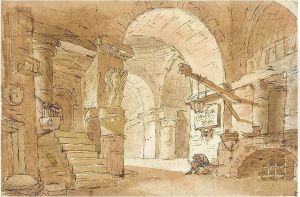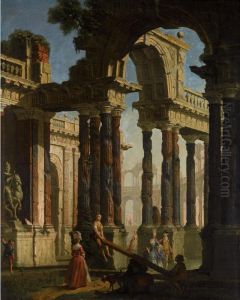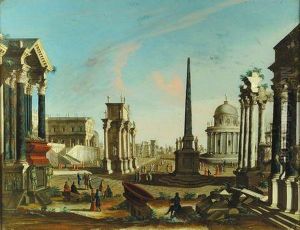Francesco Chiaruttini Paintings
Francesco Chiaruttini was an Italian architect and engraver, born in 1749 in Venice, a city that was a hub for culture and the arts during the 18th century. His contributions to architecture and his work as an engraver are part of the rich artistic legacy of the late Baroque and Neoclassical periods. Little is known about his early life and training, but it is clear that he was active during a time when Venice was transitioning from the ornate Baroque style to the more restrained and classical Neoclassical style.
During his career, Chiaruttini was known for his engravings that often depicted architectural designs and details. These works were not only artistic expressions but also served as important documents for the study and dissemination of architectural ideas. He collaborated with other architects of his time, which was a common practice that allowed for the exchange of ideas and the integration of various artistic skills into architectural projects.
Chiaruttini's works reflect the prevailing tastes of his era, which favored classical forms and proportions. His engravings demonstrate a meticulous attention to detail and a deep understanding of architectural principles. They also provide insights into the construction techniques and aesthetic preferences of the time.
Unfortunately, despite his contributions, Francesco Chiaruttini remains a relatively obscure figure in art history, and many details of his personal life and professional achievements have not been well-documented. He passed away in 1821, leaving behind a body of work that continues to be of interest to scholars studying the architectural and artistic movements of the 18th and early 19th centuries. His legacy is preserved in the engravings and designs that survive him, which are valuable resources for understanding the evolution of architectural thought and practice in his native Italy and beyond.


